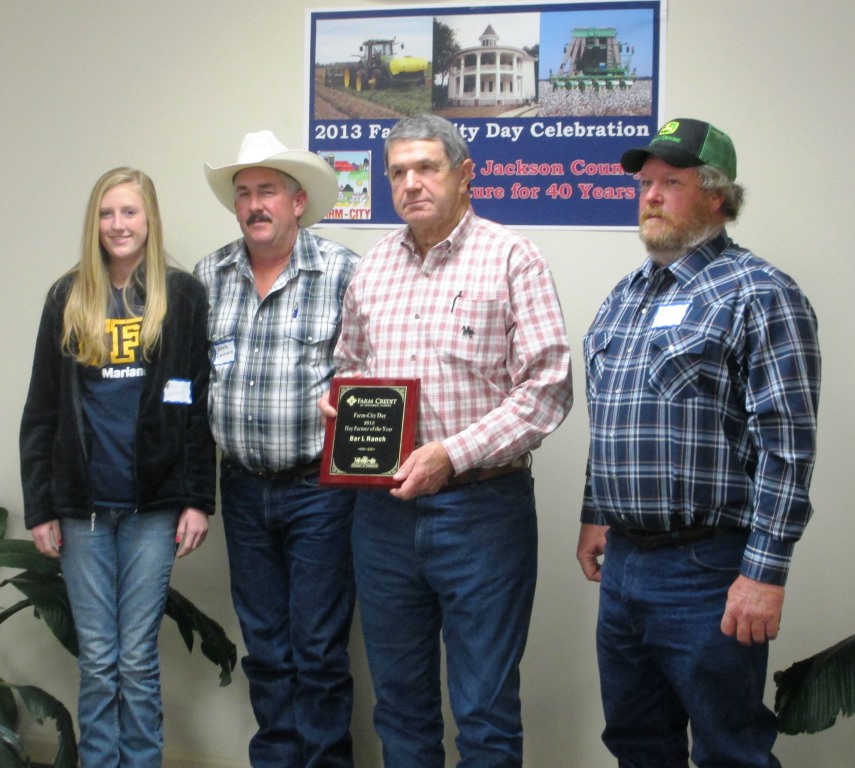 2013 Hay Farmers of the Year – Bar L Ranch
2013 Hay Farmers of the Year – Bar L Ranch
The Bar L Ranch produces their own Bermudagrass hay and round bale silage (baleage), which is quite an undertaking, considering they feed 50 bales of hay per day all winter. Frustrated with weather and hay quality variation, they switched to putting up baleage, or round bale silage during the summer months. The Laramores put up dry hay in the fall and store it in barns, or wrap wet baleage and store in feeding stations in the summer; all at optimum maturity and quality.
This year Herman Laramore sent in 5 forage samples for quality testing on behalf of Bar L Ranch. The highest quality sample was from Tifton 85 bermudagrass baleage produced in the field on the corner of Highway 73 and Laramore Road. This baleage had a Relative Forage Quality (RFQ) index of 100.6 with an estimate dry matter intake of 2.26% of body weight. An RFQ index of 100 is equal to mature, or low quality alfalfa hay. RFQ is a single number index that takes into account the protein, energy, fiber and digestibility of the hay. The top baleage sample was preserved with 70% moisture content, 10.5% Crude Protein (CP), 54.8% Total Digestible Nutrients (TDN) on a dry matter basis. One of the other samples Laramore sent in for testing was some baleage produced in 2012, which was not fed this past winter. Even after sitting in the field for more than a year, the baleage was still good quality with an RFQ of 83.3, CP of 9% and TDN of 51.9%. This really shows that if the plastic wrapping stays intact, in the absence of oxygen, baleage will maintain its quality, even when stored in the field for long periods of time.
Over the years the Bar L Ranch has utilized an assortment of bulk commodity feeds to supplement the hay or baleage they produce. They have used: whole cotton seed and gin trash from the local cotton gin, distiller’s grain from the ethanol plant in Camilla, Georgia, chicken litter from Alabama poultry farms, small grains and ryegrass, and some commercial feed products. Larmore says the goal is to provide nutrients for optimal performance, at the lowest cost.
The Hay Farmer of the Year is based on standardized quality testing of forage samples submitted through the Extension Service.
 0
0

